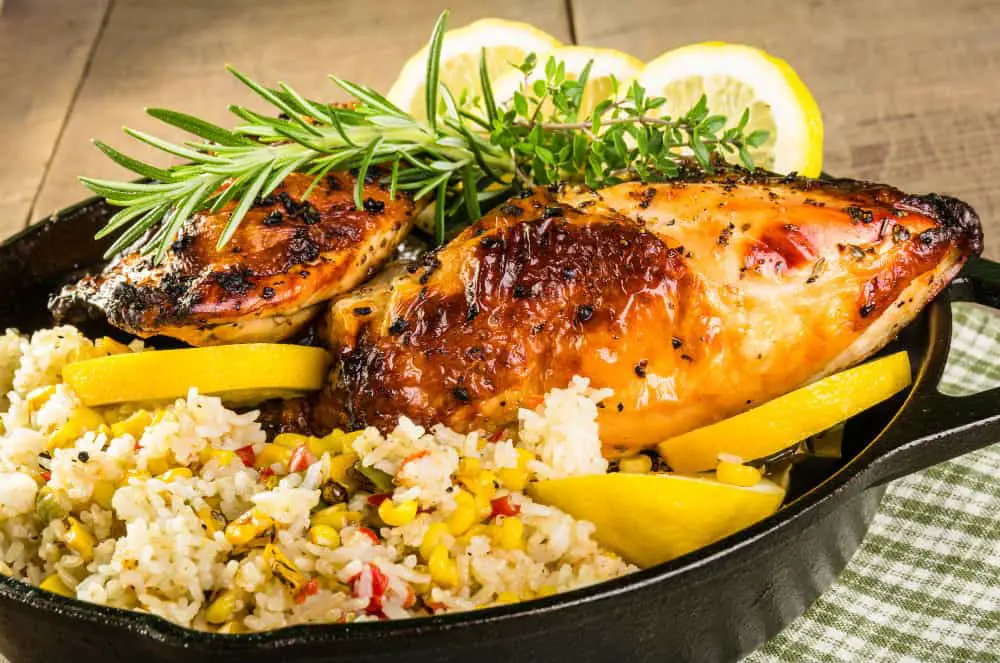Truth be told, a halogen convection oven cooks far more efficiently and faster than a conventional oven. Unlike a conventional oven, a halogen version reaches full heat faster, mostly because of its small size yet also because the fan helps to circulate the air inside, evenly distributing the heat throughout.
You can cook a wealth of meals in your halogen oven. But if you’ve just bought the one and have no idea how to use it, this little guide will be handy anytime.
1. Choose the halogen-friendly recipes
While you can use any standard baking recipe, choosing the halogen-friendly ones will ensure successfully cooked meals. When you choose a standard baking recipe, you’ll need to alter the baking time and temperature. The halogen-friendly recipes already contain this information so you won’t have to rack your brain.
2. Choose the right baking dish
Since a halogen oven is smaller than a conventional oven, you may need to invest in the smaller baking dish. Any ovenproof tray or dish should actually be fine, just pay attention to the size – it must perfectly fit inside of your halogen oven.
3. Use a high-quality foil
If the recipe requires using a foil, be careful with it. Low-quality foil, especially when poorly wrapped around the sides of the baking dish, can become loose, float, and stick to the heating element. Opt for a high-quality foil and make sure you wrap it well.
4. Preheat your halogen oven
Just like you typically preheat your conventional oven, consider preheating the halogen as well. Most recipes don’t mention it, but preheating ensures successful cooking. Some models have a preheat button; if yours doesn’t have the one, just set the desired temperature 3 to 5 minutes before placing the baking dish in the oven.
5. Put the baking dish in your halogen oven
Now that your meal is ready for baking, place it carefully on the bottom or top rack, leaving ½ inch gap in between the dish and the top, bottom, and sides of the machine to promote better heating. The top rack is ideal for toasting, browning, and grilling, while the bottom rack is perfect for roasting, baking, steaming, defrosting, reheating, and other ways of cooking.
6. Set the time and temperature
If you follow the halogen-friendly recipes, you may not worry about figuring out the time and temperature for your meal to cook well. However, if you use the regular baking recipes, especially desserts, follow the recommended cooking temperatures and times:
- Bread loaves: 320F (160C) and 25 to 30 minutes;
- Bread rolls: 350F (180C) and 12 to 15 minutes;
- Pies with two crusts and filling: 350F (180C) and 35 to 40 minutes;
- Pies without top crust but with filling: 320F (160C) and 25 to 30 minutes;
- Pastries: 390F (200C) and 8 to 10 minutes;
- Muffins: 350F (180C) and 12 to 15 minutes;
- Cornbread: 350F (180C) and 18 to 20 minutes;
- Layer cakes: 300F (150C) and 18 to 20 minutes;
- Buns: 390F (200C) and 10 to 12 minutes;
- Brownies: 300F (150C) and 18 to 20 minutes.
For all other baking recipes, reduce the temperature of uncovered meals from 70F to 100F (20C to 40C). Keep your eye on the dish while it’s baking in order to avoid overcooking.
Using a halogen oven isn’t a rocket science. As soon as you start, you won’t stop. You’ll learn all the time and temperature alterations and may forget about your conventional oven forever.


